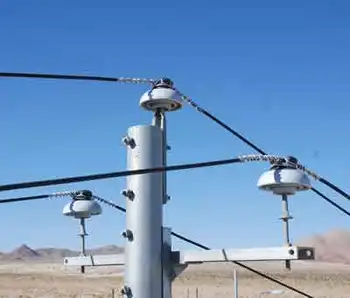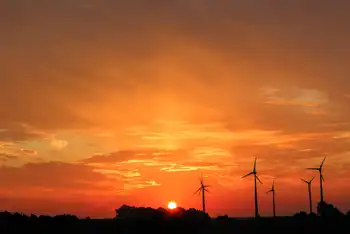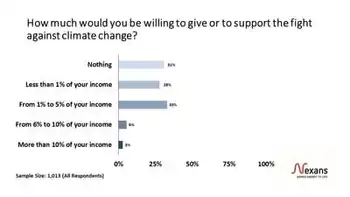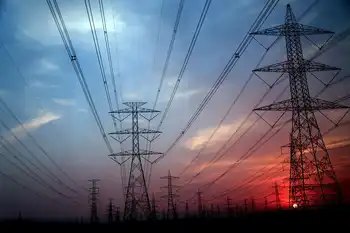EVs likely to spark new “smart grid”
"The moment you put a plug on a car, you've got these two titan industries coming together and supporting a customer," said Ed Kjaer, the director of electric transportation for Southern California Edison, a giant utility.
The alliance between utilities and carmakers will lead to numerous changes, he predicts, including a faster build of the "smart grid." This involves the use of digital technology by utilities to allow consumers real-time measures of their energy use.
For power providers, the smart grid allows them to provide pricing that encourages conservation and better utilizes off-peak hours overnight, when there's less draw on electricity as factories and office buildings ramp down.
In a true smart grid, digital communications between a utility and the consumer's home could stagger the charge coming to an electric car depending on the overall demand for power. Big off-peak energy users could see lower bills.
This is one factor behind General Electric's November announcement that it will purchase 25,000 electric cars by 2015, a number almost as large as its current fleet of 30,000 conventional gasoline-powered cars. GE anticipates savings from fuel economy and overnight charging.
Dual savings help explain why Dennis Beal, the vice president of global vehicles for FedEx Corp., recently said that 30 percent of his company's fleet could be electric if batteries with a 100-mile range became commonplace.
Much of the early shift to electric vehicles has come from companies that make deliveries, provide services or operate at airports.
"People tend to focus on the light-duty cars segment... and they don't understand the off-road piece," said Genevieve Cullen, the vice president of the Electric Drive Transportation Association, an advocacy group for electric cars. "A small increase in efficiency translates into huge oil savings."
Carmakers and manufacturers of electric-car chargers already have agreed on a common plug that'll work across the wide range of equipment providers. Utilities, carmakers and equipment providers now are working out a standard communication protocol for electric cars to communicate with power grids. This would be key in advancing a smart grid.
What'll become of the corner Exxon or Shell station?
The first wave of car-charging stations is likely to involve the owners of buildings, and national retail chains that install car-charging operations for some small economic or marketing gain. Once a critical mass is reached in production and sales of electric cars, advocates said, the market could build out quickly.
"At some point, you will have these well-capitalized people that come in and who say, 'We want to be the Exxon of charging infrastructure.' And they will buy electricity in bulk from the utilities, and they will pony up the money to actually plant infrastructure on the ground, sign up customers," said Mahi Reddy, the CEO of SemaConnect, a company in Annapolis, Maryland, that's making electric car chargers.
Reddy calls these companies charging infrastructure network operators, and expects them to provide "smart cards" similar to building ID badges or transit-system electronic-fare cards. When motorists pull into charging stations, they'll swipe the cards to pay, much like using credit cards.
"Electricity has infrastructure that is already ubiquitous," Reddy said. Power lines and power distribution are already in place, making the transition far cheaper than for competing technologies.
"It is orders of magnitude cheaper than, say, installing hydrogen infrastructure or an ethanol infrastructure," he said.
Electric cars aren't expected to overburden the utilities that are developing the smart grid.
"There is so much excess capacity that there are not near- or midterm challenges. Where we think there is going to be some issue, and it will vary across the country, is really the last 50 feet," said Kjaer of Southern Cal Edison, referring to the connections from homes to the neighborhood transformer.
Sherif Marakby, the director of electric-vehicle programs for Ford Motor Co., shares that view.
"How many electric vehicles can you charge on the same transformer in a subdivision? It seems like it's pretty doable to a large extent... as long as the trend is to charge at the low points overnight," he said.
Related News

Volkswagen's German Plant Closures
BERLIN - Volkswagen (VW), one of the world’s largest automakers, is undergoing a significant transformation with the announcement of plant closures in Germany. As reported by The Guardian, this strategic shift is part of VW’s broader move towards prioritizing electric vehicles (EVs) and adapting to the evolving automotive market. The decision highlights the company’s commitment to sustainability and innovation amid a rapidly changing industry landscape.
Strategic Plant Closures
Volkswagen’s decision to close several of its plants in Germany marks a pivotal moment in the company's history. These closures are part of a broader strategy to streamline operations, reduce costs, and…





